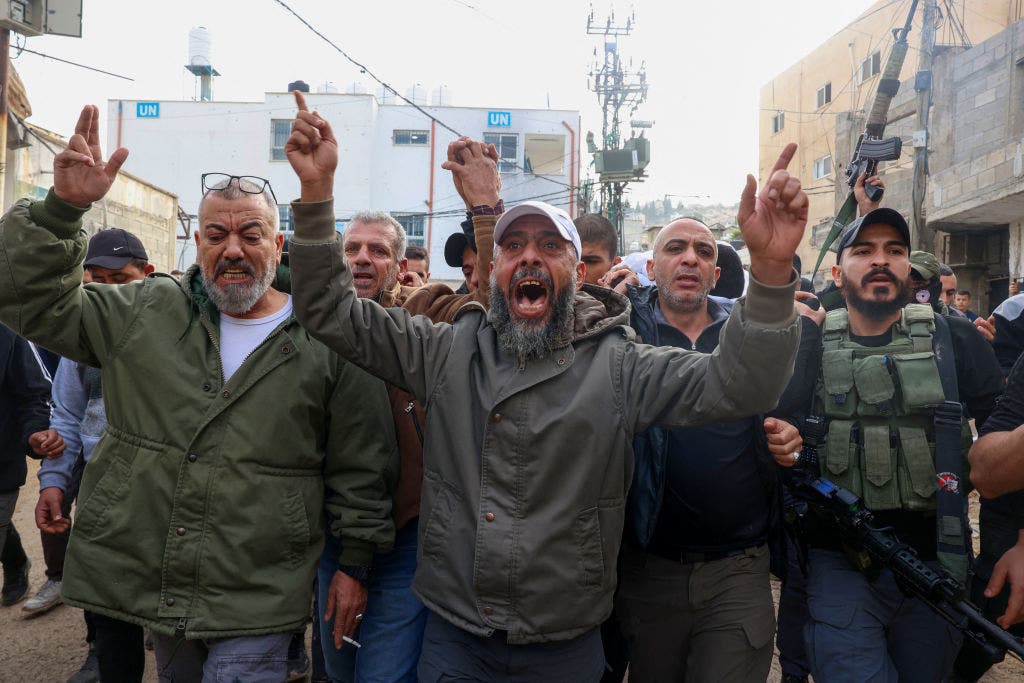The Palestinian Authority (PA) finds itself in a precarious position, grappling with escalating tensions and armed resistance in the northern West Bank city of Jenin. This precarious situation stems from the PA’s ongoing operation against local militant factions, primarily fueled by Iranian funding, creating a volatile environment and exposing the widening chasm between the governing body and the communities it seeks to control. This complex dynamic is further complicated by the PA’s reliance on, and simultaneous resistance to, Israeli and international support, creating a delicate balancing act with potentially far-reaching consequences.
The central issue fueling the conflict is the influx of Iranian funds and weaponry to these militant groups, empowering them to challenge the PA’s authority. The PA, recognizing the destabilizing influence of Iran, has launched an operation to curb this flow of resources and suppress the factions. The operation’s timing coincides with both heightened regional instability, including the Gaza war and the precarious situation in Syria, and a growing public sentiment against further conflict with Israel. This timing suggests a calculated move by PA President Mahmoud Abbas to consolidate his power and prevent the erosion of the PA’s authority in the West Bank, drawing parallels with the fall of other regional leaders like Bashar al-Assad in Syria.
Adding another layer of complexity to this situation, the United States has reportedly requested Israel’s permission to provide military aid to the PA, including ammunition, protective gear, and armored vehicles. This request underscores the delicate political dance between the PA, Israel, and the U.S. While the U.S. seeks to bolster the PA’s security capabilities, the requirement for Israeli approval highlights the ongoing power imbalance and the PA’s dependency on its often-adversarial neighbor. Furthermore, the request illustrates the international community’s recognition of the severity of the situation in Jenin and the potential for wider destabilization.
The recent killing of an Islamic Jihad commander by PA forces in Jenin has further inflamed tensions, turning the Jenin refugee camp into a hotbed of resistance. The camp residents, already deeply distrustful of the PA, view these actions as further evidence of the PA’s alignment with Israeli interests. This perception fuels the cycle of violence and strengthens the resolve of the militants, making it increasingly difficult for the PA to regain control. The situation in Jenin now resembles a stalemate, with PA forces positioned outside the refugee camp, unable to advance or retreat without risking further escalation. This impasse showcases the limitations of the PA’s security apparatus and the deep-seated resentment within the community.
Experts paint a bleak picture of the PA’s ability to restore order, particularly in areas like Jenin that have long operated outside its effective control. They argue that the PA’s authority has been significantly eroded, leaving a power vacuum that has been filled by militant groups. The PA’s current operations are seen by some as a desperate attempt to reassert its dominance, but the entrenched resistance and lack of popular support make this a formidable, if not impossible, task. The comparison to Gaza, where the PA lost control to Hamas in 2007, further underscores the fragility of the PA’s position and the potential for a similar outcome in the West Bank, particularly in Jenin.
While the escalating violence in Jenin raises concerns, there is a prevailing belief that the conflict will likely remain contained. The residents of other West Bank cities have expressed a strong aversion to replicating the Gaza experience, prioritizing stability over further conflict. This sentiment underscores a crucial difference between Jenin and other areas of the West Bank, and suggests that while the situation in Jenin is a significant test for the PA, it is not likely to ignite a wider uprising. Nevertheless, the ongoing events in Jenin serve as a stark reminder of the deep divisions and challenges facing the Palestinian Authority, both internally and in its relationship with regional and international powers. The PA’s future, its ability to govern, and the prospect of peace in the region hang precariously in the balance as this volatile situation unfolds.


